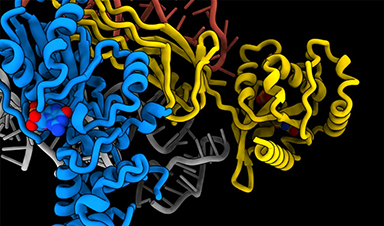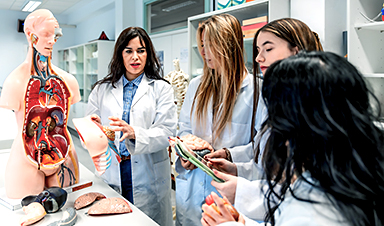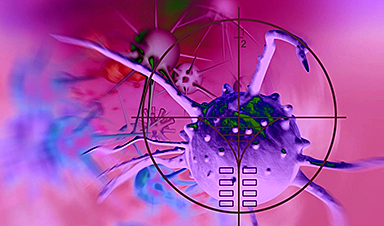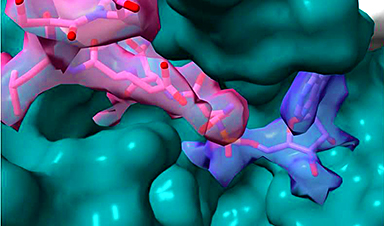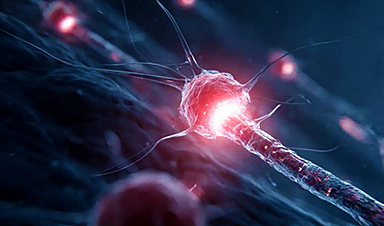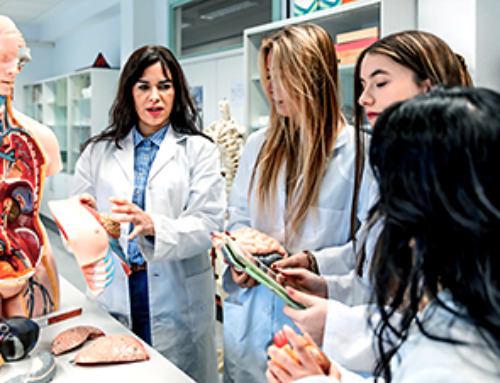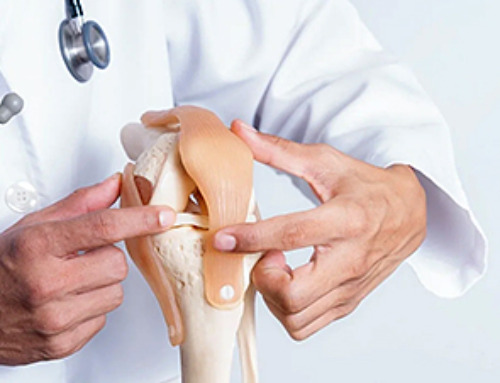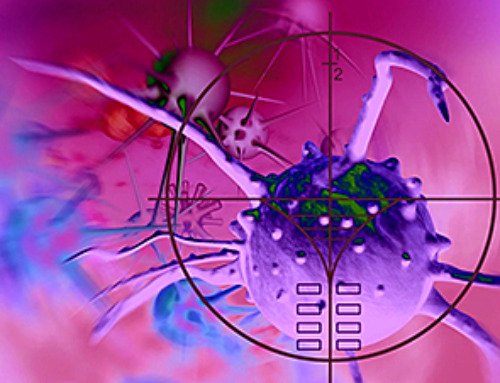Human cells contain ribosomes, a complex machine that produces proteins for the rest of the body. Now the researchers have come closer to understanding how the ribosome works.
“It is amazing that we can visualize the atomic details of the ribosome. Because they are tiny – around 20-30 nanometers.”
So says Associate Professor Eva Kummer from the Novo Nordisk Foundation Center for Protein Research, who is responsible for the new study published in Nature Communications.
And don’t worry if you don’t know how much a nanometer is. It is around one billionth of a meter.
The Ribosome
The ribosome is a part of the human cell consisting of ribosomal RNA and ribosomal proteins.
The ribosome is like a factory that builds proteins by following a set of instructions inherent in the genes.
Ribosomes are found floating in the cell cytosol, cellular organelles such as mitochondria or the protoplasm of bacteria.
Using electron microscopy, Eva Kummer and her colleagues Giang Nguyen and Christina Ritter have managed to produce a 3D model of a part of the human cell, the ribosome, which is no more than 30 nanometers in diameter.
More specifically, they have taken snapshots of how a ribosome is made.
“It is important to understand how the ribosome is built and how it works, because it is the only cell particle that produces proteins in humans and all other living organisms. And without proteins, life would cease to exist,” says Eva Kummer.
Proteins are the primary building blocks of the human body. Your heart, lungs, brain, and basically your whole body is made of proteins produced by the ribosome.
“From the outside, the human body looks pretty simple, but then consider the fact that every part of the body consists of millions of molecules, that are extremely complex, and that they all know what to do – that is pretty breathtaking,” says Eva Kummer.
The complex assembling process of the ribosome. Credit: Eva Kummer
Folding, Assembling, and Moving to the Right Place
Before ribosomes can start to produce proteins, they first need to be assembled from over 80 different components.
Eva Kummer and her colleagues have obtained 3D models of three different stages of ribosome assembly.
“It is a complex particle with lots of different parts – many proteins and RNA components – that must be folded, assembled, and moved to the right place. It does not all happen at once. Ribosome assembly is a gradual process involving several stages,” she explains.
Out of the three stages, the 3D model describing the earliest time point in the assembly is the most interesting, according to Eva Kummer, as no one has been able to describe it before.
“At this stage, we can tell e.g. that a specific protein called GTPBP10 is eager to interact with a so-called RNA component that forms a long helix,” Eva Kummer says and adds:
“In fact, towards the bottom of that helix is the catalytic center of the ribosome, which is where proteins are made. This is why it is so important that the helix is folded and placed correctly. ”
To achieve this, GTPBP10 grabs the helix and puts it in the right position for protein synthesis.
This is just one of the many stages of ribosome assembly which the new study has shed light on – insight that may pave the way for more knowledge of various diseases.
“Errors in ribosome assembly severely reduce the capacity of our cells to make proteins. These are for example proteins that convert the energy from the food we eat into energy coins that the body can use to run all sorts of cellular processes. Now, if the mitochondrial ribosome does not work, our body cannot produce enough energy coins anymore and this leads to diseases such as neurodegenerative disorders and heart conditions. And during aging, the production of these energy coins also works less and less efficiently,” Eva Kummer says and adds:
“The first step is understanding how things work. Only then can you try to change them.”
You can read “Structural insights into the role of GTPBP10 in the RNA maturation of the mitoribosome“ in Nature Communications.
Reference: “Structural insights into the role of GTPBP10 in the RNA maturation of the mitoribosome” by Thu Giang Nguyen, Christina Ritter and Eva Kummer, 2 December 2023, Nature Communications.
DOI: 10.1038/s41467-023-43599-z
News
Most Plastic in the Ocean Is Invisible—And Deadly
Nanoplastics—particles smaller than a human hair—can pass through cell walls and enter the food web. New research suggest 27 million metric tons of nanoplastics are spread across just the top layer of the North [...]
Repurposed drugs could calm the immune system’s response to nanomedicine
An international study led by researchers at the University of Colorado Anschutz Medical Campus has identified a promising strategy to enhance the safety of nanomedicines, advanced therapies often used in cancer and vaccine treatments, [...]
Nano-Enhanced Hydrogel Strategies for Cartilage Repair
A recent article in Engineering describes the development of a protein-based nanocomposite hydrogel designed to deliver two therapeutic agents—dexamethasone (Dex) and kartogenin (KGN)—to support cartilage repair. The hydrogel is engineered to modulate immune responses and promote [...]
New Cancer Drug Blocks Tumors Without Debilitating Side Effects
A new drug targets RAS-PI3Kα pathways without harmful side effects. It was developed using high-performance computing and AI. A new cancer drug candidate, developed through a collaboration between Lawrence Livermore National Laboratory (LLNL), BridgeBio Oncology [...]
Scientists Are Pretty Close to Replicating the First Thing That Ever Lived
For 400 million years, a leading hypothesis claims, Earth was an “RNA World,” meaning that life must’ve first replicated from RNA before the arrival of proteins and DNA. Unfortunately, scientists have failed to find [...]
Why ‘Peniaphobia’ Is Exploding Among Young People (And Why We Should Be Concerned)
An insidious illness is taking hold among a growing proportion of young people. Little known to the general public, peniaphobia—the fear of becoming poor—is gaining ground among teens and young adults. Discover the causes [...]
Team finds flawed data in recent study relevant to coronavirus antiviral development
The COVID pandemic illustrated how urgently we need antiviral medications capable of treating coronavirus infections. To aid this effort, researchers quickly homed in on part of SARS-CoV-2's molecular structure known as the NiRAN domain—an [...]
Drug-Coated Neural Implants Reduce Immune Rejection
Summary: A new study shows that coating neural prosthetic implants with the anti-inflammatory drug dexamethasone helps reduce the body’s immune response and scar tissue formation. This strategy enhances the long-term performance and stability of electrodes [...]
Scientists discover cancer-fighting bacteria that ‘soak up’ forever chemicals in the body
A family of healthy bacteria may help 'soak up' toxic forever chemicals in the body, warding off their cancerous effects. Forever chemicals, also known as PFAS (per- and polyfluoroalkyl substances), are toxic chemicals that [...]
Johns Hopkins Researchers Uncover a New Way To Kill Cancer Cells
A new study reveals that blocking ribosomal RNA production rewires cancer cell behavior and could help treat genetically unstable tumors. Researchers at the Johns Hopkins Kimmel Cancer Center and the Department of Radiation Oncology and Molecular [...]
AI matches doctors in mapping lung tumors for radiation therapy
In radiation therapy, precision can save lives. Oncologists must carefully map the size and location of a tumor before delivering high-dose radiation to destroy cancer cells while sparing healthy tissue. But this process, called [...]
Scientists Finally “See” Key Protein That Controls Inflammation
Researchers used advanced microscopy to uncover important protein structures. For the first time, two important protein structures in the human body are being visualized, thanks in part to cutting-edge technology at the University of [...]
AI tool detects 9 types of dementia from a single brain scan
Mayo Clinic researchers have developed a new artificial intelligence (AI) tool that helps clinicians identify brain activity patterns linked to nine types of dementia, including Alzheimer's disease, using a single, widely available scan—a transformative [...]
Is plastic packaging putting more than just food on your plate?
New research reveals that common food packaging and utensils can shed microscopic plastics into our food, prompting urgent calls for stricter testing and updated regulations to protect public health. Beyond microplastics: The analysis intentionally [...]
Aging Spreads Through the Bloodstream
Summary: New research reveals that aging isn’t just a local cellular process—it can spread throughout the body via the bloodstream. A redox-sensitive protein called ReHMGB1, secreted by senescent cells, was found to trigger aging features [...]
AI and nanomedicine find rare biomarkers for prostrate cancer and atherosclerosis
Imagine a stadium packed with 75,000 fans, all wearing green and white jerseys—except one person in a solid green shirt. Finding that person would be tough. That's how hard it is for scientists to [...]
